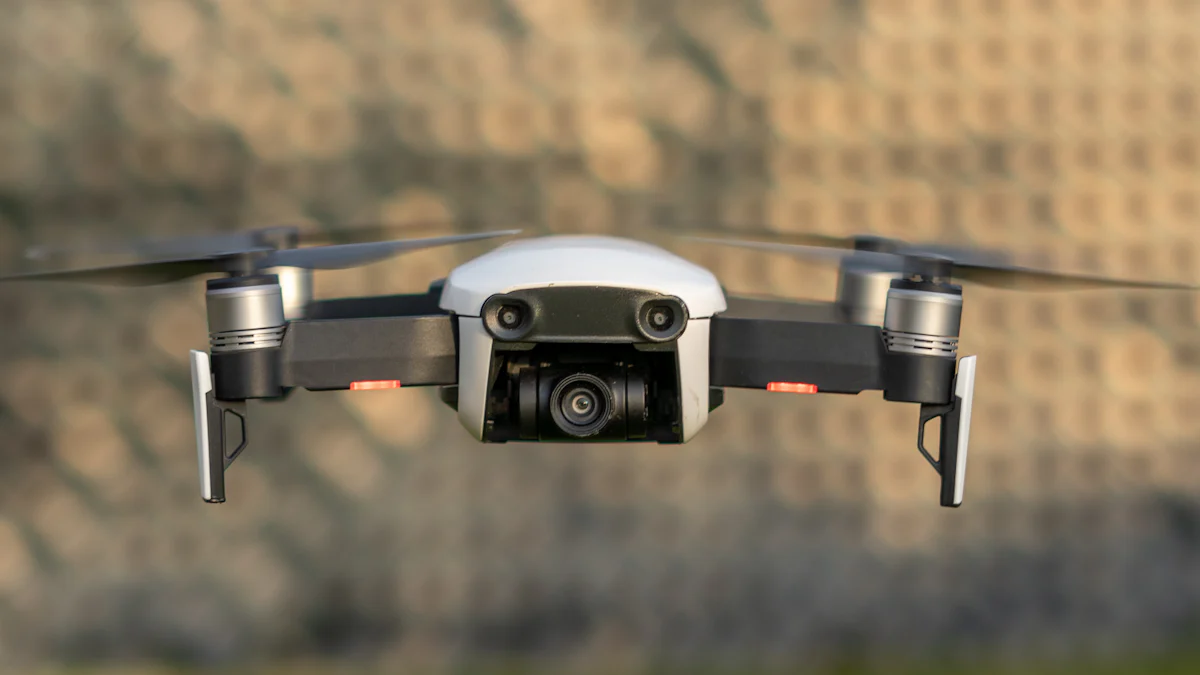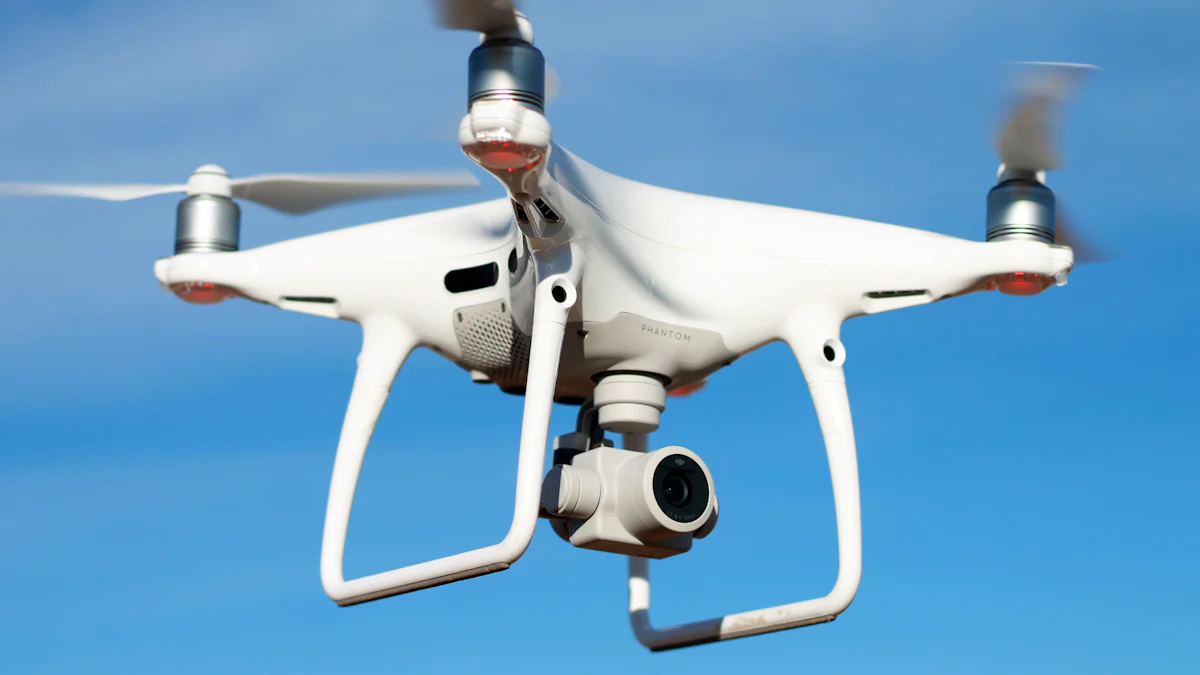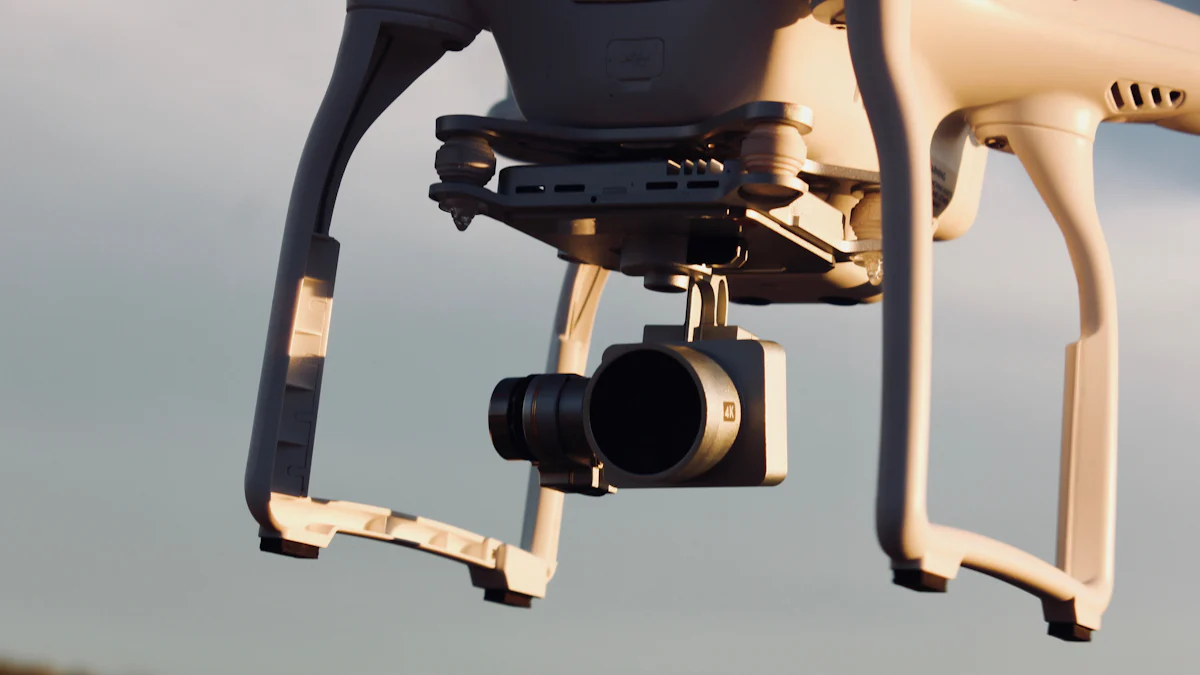What Are UAV Video Cameras and How Do They Work

UAV video cameras are specialized devices mounted on drones that capture high-quality aerial footage. These cameras function by transmitting real-time video to operators, allowing you to monitor and record from above. The importance of UAV cameras in modern technology cannot be overstated. They enhance various industries, from agriculture to real estate. For instance, in agriculture, UAV cameras monitor crop health with precision. Recent advancements in camera sensor technology have significantly improved UAV performance, offering higher resolutions and better low-light capabilities.
Key Takeaways
UAV video cameras take clear pictures from the sky. They help fields like farming and real estate.
There are different types of UAV cameras. These include fixed, gimbaled, thermal, and multi-spectral cameras. Each type has its own use.
When picking a UAV camera, think about resolution, zoom, stabilization, and how well it works in low light.
UAV cameras are useful in emergencies, search and rescue, and making videos. They give special views and help with monitoring.
In the future, UAV technology will likely get better. We may see more automation and artificial intelligence, which will help them do even more things.
Types of UAV Cameras

UAV cameras come in various types, each designed for specific applications. Understanding these types helps you choose the right camera for your needs.
Fixed Cameras
Fixed cameras are the simplest type of UAV cameras. They remain stationary and capture images or video from a single angle. These cameras are often lightweight and cost-effective, making them ideal for hobbyists and basic aerial photography. You can find consumer-grade cameras that capture standard definition (SD) or high definition (HD) images. They work well for general-purpose use, such as scenic photography or casual video recording.
Gimbaled Cameras
Gimbaled cameras take video quality to the next level. They use a stabilization system that counteracts the movements of the UAV. This technology ensures smooth and clear footage, which is essential for high-quality videography and photography. Here are some key benefits of gimbaled cameras:
They stabilize the camera to reduce shakes caused by wind or drone movements.
Mechanical stabilization is more effective than digital stabilization, which relies on software.
You can achieve professional-grade results, making them popular in filmmaking and surveying.
Thermal Cameras
Thermal cameras detect heat rather than visible light. They are invaluable in various applications, including:
Search and rescue operations: You can locate missing persons by detecting their body heat.
Firefighting: These cameras help identify hotspots in wildfires.
Industrial inspections: They assess equipment for overheating or malfunctioning.
In agriculture, thermal cameras identify crop pests and diseases, measure soil moisture, and monitor livestock. They also play a role in infrastructure assessments, such as analyzing structural stability and detecting erosion on bridges and roads.
By understanding the different types of UAV cameras, you can select the right one for your specific needs, whether for personal use or professional applications.
Multi-Spectral Cameras
Multi-spectral cameras are advanced tools that capture images across multiple wavelengths of light. These cameras provide valuable insights, especially in agriculture and environmental monitoring. By using these cameras, you can analyze plant health and environmental conditions more effectively.
Here are some unique features of multi-spectral cameras:
Enhanced Plant Health Analysis: These cameras detect variations in chlorophyll content. This capability allows you to identify stress, disease, and nutrient deficiencies early.
Broad Spectral Coverage: Multi-spectral cameras capture non-visible bands, such as near-infrared (NIR) and Red Edge. This broad coverage gives you a comprehensive view of environmental conditions.
Improved Resource Efficiency: You can apply water, fertilizers, and pesticides more precisely. This precision reduces waste and promotes sustainable practices.
Accurate Vegetation Indices: These cameras enable you to calculate indices like the Normalized Difference Vegetation Index (NDVI) and the Normalized Difference Red Edge (NDRE). These indices provide insights into plant vigor and soil conditions.
Actionable Insights for Large-Scale Operations: Multi-spectral cameras cover extensive areas quickly. This capability provides actionable data for agricultural and environmental projects, making them ideal for large-scale operations.
Using multi-spectral cameras can transform how you approach farming and land management. They allow you to make informed decisions based on accurate data. As you explore the potential of these cameras, you will find that they enhance your ability to monitor crops and manage resources effectively. Whether you are a farmer or an environmentalist, multi-spectral cameras can significantly improve your operations.
Key Features of UAV Video Cameras

When selecting a UAV video camera, you should consider several key features that significantly impact performance and usability.
Resolution
Resolution plays a crucial role in the quality of the imagery captured by UAV cameras. Higher resolution means more detailed images, which are essential for tasks like mapping and surveying. You can zoom in on images without losing clarity, making it easier to examine small or distant objects. Several factors influence image quality, including:
Sensor Size: A larger sensor captures more light, resulting in clearer images.
Lens Quality: High-quality lenses reduce distortions and improve sharpness.
Processing Capabilities: Advanced algorithms enhance the quality of captured images.
Investing in high-resolution cameras ensures you obtain high-quality images that meet your specific needs.
Zoom Capabilities
Zoom capabilities are vital for many UAV applications. You can choose between optical and digital zoom options:
Optical Zoom: This maintains resolution and sharpness, making it ideal for detailed inspections and precise measurements.
Digital Zoom: This enlarges the image by cropping and resizing, often resulting in pixelated and less detailed images.
For professional applications, optical zoom is preferred due to its superior clarity and detail. A UAV zoom camera with robust zoom capabilities allows you to capture distant subjects without compromising image quality.
Stabilization Technology
Stabilization technology is essential for maintaining sharp images during UAV operation. Various methods exist to achieve stabilization:
Optical Image Stabilization: This reduces blur by compensating for camera movement.
Electronic Image Stabilization: This uses software to enhance image clarity by minimizing shakes.
Mechanical Stabilization: This employs gyroscopes and motors to physically adjust the camera's position, counteracting UAV vibrations.
Many advanced UAV cameras integrate both mechanical and electronic stabilization for optimal image stability. Gimbal systems are crucial for stabilizing UAV cameras, ensuring smooth and clear footage, which is vital for professional-quality videography.
By understanding these key features, you can make informed decisions when selecting UAV cameras that best suit your needs.
Low-Light Performance
Low-light performance is a critical feature of UAV video cameras. It determines how well the camera captures images in dim lighting conditions. This capability is essential for various applications, such as nighttime surveillance, search and rescue missions, and wildlife monitoring. Here are some key aspects to consider regarding low-light performance:
Sensor Technology: Cameras with larger sensors typically perform better in low light. They can capture more light, resulting in clearer images. Look for cameras that use advanced sensor technologies, such as CMOS or CCD sensors, which enhance low-light capabilities.
Lens Aperture: The lens aperture affects how much light enters the camera. A wider aperture (lower f-number) allows more light to reach the sensor. This feature is crucial for capturing bright images in dark environments.
Image Processing: Advanced image processing algorithms can significantly improve low-light performance. These algorithms reduce noise and enhance details in low-light images. Cameras with built-in noise reduction features can produce clearer images even in challenging lighting conditions.
Tip: When selecting a UAV camera for low-light applications, prioritize models that offer a combination of large sensors, wide apertures, and advanced image processing capabilities. This combination will ensure you capture high-quality footage, even in the dark.
Infrared Capabilities: Some UAV cameras come equipped with infrared (IR) technology. This feature allows you to capture images in complete darkness. IR cameras detect heat signatures, making them ideal for search and rescue operations or wildlife monitoring at night.
Low-Light Modes: Many modern UAV cameras include specific low-light modes. These modes optimize settings for nighttime use, enhancing image quality. Activating these modes can help you achieve better results in low-light situations.
Applications of UAV Video Cameras
UAV video cameras have diverse applications across various industries. Their ability to capture high-quality imagery from above makes them invaluable tools for professionals.
Agriculture
Crop Monitoring
In agriculture, UAV cameras play a crucial role in monitoring crop health. You can use drones to assess the average growth of crops, ensuring you can take targeted measures when necessary. UAV cameras help you monitor crop health with precision, leading to better management decisions.
Precision Farming
Precision farming benefits significantly from UAV technology. Drones assist in health assessments, allowing you to identify issues early. They also ensure accuracy in agricultural insurance claims, making the process more efficient. Here’s a quick overview of how UAV cameras enhance agriculture:
Application Area | Description |
|---|---|
Crop Monitoring | Drones help monitor the average growth of crops, ensuring farmers can take targeted measures. |
Health Assessment | UAV cameras assist in assessing crop health with precision, leading to better management. |
Agricultural Insurance | Drones ensure accuracy in damage determination and efficiency in claims settlement. |
Surveillance
Security Monitoring
UAV cameras are essential for aerial surveillance. They cover vast areas efficiently, providing comprehensive oversight without extensive manpower. High-resolution imaging allows you to detect vulnerabilities and suspicious activities effectively.
Law Enforcement
In law enforcement, UAVs equipped with night vision and thermal imaging enhance monitoring capabilities. These technologies enable effective surveillance in low-light conditions, ensuring thorough oversight during critical operations.
Disaster Response
Search and Rescue
UAV cameras play a vital role in disaster response efforts. They enable rapid damage assessments, allowing you to survey large areas quickly. Drones equipped with thermal imaging can locate survivors in hard-to-reach areas, making them invaluable during search and rescue missions.
Damage Assessment
Drones also assist in damage assessment after disasters. They create detailed maps of affected regions, aiding decision-making during crises. Additionally, UAVs can inspect critical infrastructure swiftly, capturing close-up images of damage. This capability helps authorities understand the extent of destruction and plan recovery efforts effectively.
Tip: Utilizing UAV cameras in disaster response not only speeds up recovery but also enhances safety for responders.
Media and Entertainment
UAV video cameras have revolutionized the media and entertainment industries. They provide filmmakers and content creators with innovative tools to enhance their productions.
Aerial Filming
Drones offer a cost-effective alternative to traditional aerial filming methods. You can capture stunning visuals without incurring high expenses. This affordability allows independent filmmakers to access aerial shots that were once reserved for big-budget productions. Drones also provide flexibility to reach hard-to-access locations. You can achieve creative shots that were previously impossible, enhancing storytelling in your projects.
Advanced stabilization technology in drones ensures smooth footage. This feature significantly improves the overall quality of media productions. Whether you are filming a dramatic scene or a breathtaking landscape, UAV cameras deliver exceptional results.
Event Coverage
UAV cameras play a crucial role in event coverage. They enhance storytelling in music videos by offering unique perspectives and cinematic shots. This capability elevates the production value of your projects. Drones also revolutionize sports broadcasting. They provide dynamic aerial views that engage audiences and improve the viewing experience.
Moreover, UAV cameras are pivotal in creating virtual reality experiences. They allow for immersive exploration within digital landscapes, making your content more engaging. With the ability to capture high-quality footage from various angles, you can elevate your event coverage to new heights.
UAV video cameras have transformed how you approach various tasks. Their significance lies in their ability to provide high-resolution imagery and real-time data. In agriculture, UAV cameras assist in monitoring crop health and optimizing farming operations. In real estate, they enhance property marketing with stunning aerial shots. For search and rescue, UAV cameras offer real-time views of hard-to-reach areas, aiding in efficient rescues.
Looking ahead, advancements in artificial intelligence and automation will enhance UAV camera capabilities. Expect automated image analysis and improved object recognition in future models. These trends will further expand the applications of UAV cameras across industries, making them even more essential tools for professionals.
FAQ
What is the average cost of a UAV video camera?
The cost of UAV video cameras varies widely. Basic models start around $100, while professional-grade cameras can exceed $10,000. Your budget and intended use will determine the best option for you.
How long can UAV cameras record video?
Most UAV cameras can record video for 20 to 60 minutes, depending on battery life and camera settings. You should consider battery capacity and swap options for extended recording sessions.
Can I use a UAV camera for indoor filming?
Yes, you can use UAV cameras for indoor filming. However, ensure you have enough space and consider obstacles like furniture and ceilings. Indoor flying may require additional skills and precautions.
Are UAV cameras weather-resistant?
Many UAV cameras are designed to be weather-resistant. Look for models with an IP rating that indicates protection against dust and water. Always check manufacturer specifications for details on weather resistance.
Do I need a license to operate a UAV camera?
Yes, in many countries, you need a license to operate UAVs for commercial purposes. Regulations vary by location, so check local laws to ensure compliance before flying your UAV camera.